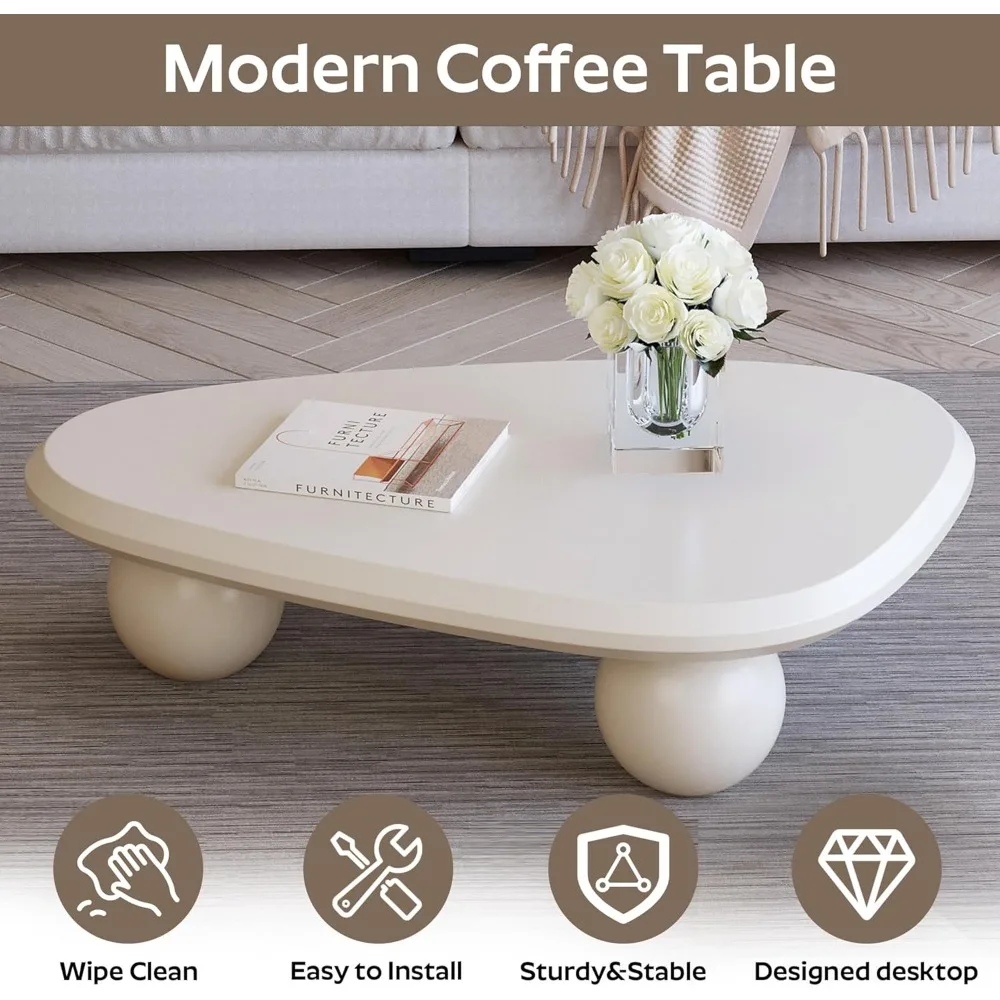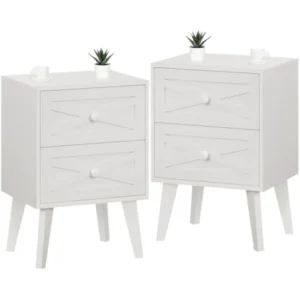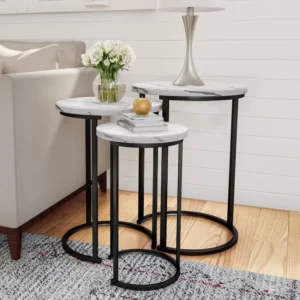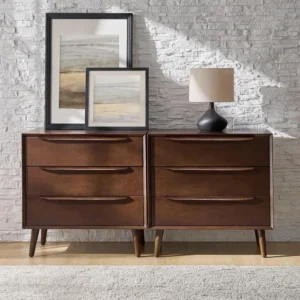Introduction: Why the Right Coffee Table Matters in Small Spaces
Living in compact spaces has become increasingly common, with urban apartments shrinking by nearly 10% in size over the last decade. In these smaller living environments, every piece of furniture needs to work harder and smarter—especially the coffee table.
Your coffee table isn’t just a surface for coffee mugs; it’s often the centerpiece of your living area that serves multiple purposes:
- A dining spot for casual meals
- A workspace for laptops and projects
- A display area for books and decorative items
- A storage solution for everyday essentials
- A focal point that defines your living room’s style
Selecting the right compact coffee table can dramatically transform how your small space functions and feels. The difference between a well-chosen table and one that overwhelms your room can impact everything from traffic flow to your ability to entertain guests comfortably.
This guide will walk you through the essential considerations—from precise measurements and space-saving features to material choices and placement strategies—helping you make an informed decision that enhances your living space rather than cluttering it. Understanding foundational concepts for choosing coffee tables will ensure your selection serves both your practical needs and aesthetic preferences. If you’re ready to explore options, you might want to browse small coffee table options for compact spaces to get inspired.
Understanding Your Space Requirements
Before you start shopping, taking time to assess your space needs will save you from the disappointment of bringing home a coffee table that doesn’t fit—physically or functionally.
Measuring Your Space
Start by creating a simple room diagram:
1. Measure the entire living area dimensions
2. Mark the position of existing furniture, especially seating
3. Identify the central area where your coffee table will go
4. Note doorways, walkways, and other circulation paths
5. Measure the distance between your sofa and other seating
Understanding tips for planning your coffee table’s purpose and style early in the process helps you avoid common selection mistakes later.
Functional Requirements Checklist
Ask yourself these key questions to determine what your coffee table needs to do:
– Will you eat meals or work at this table regularly?
– Do you need hidden storage for remotes, magazines, or throws?
– How many people typically gather in your living space?
– Do you entertain guests frequently?
– Do you need a surface for displaying decorative items?
– Will children or pets be using or accessing the table?
If your space is particularly tight or awkwardly shaped, consider how round options that can improve flow in tight spaces might be beneficial for your layout.
Creating this clear assessment of your needs before shopping will help you filter out options that won’t work, saving you time and potential frustration with returns.
Essential Measurements and Proportions for Small Spaces
Getting the size right is perhaps the most critical factor when selecting a coffee table for a small space. A table that’s too large will make your room feel cramped, while one that’s too small may look insignificant and function poorly.
The Two-Thirds Rule
A good starting point is the “two-thirds rule”—your coffee table should be approximately two-thirds the length of your sofa. This creates visual balance while maintaining functionality.
Critical Measurements
| Element | Ideal Measurement | Minimum for Small Spaces |
|---|---|---|
| Height | 1-2” lower than sofa seat | 14-16” |
| Length | 2/3 of sofa length | 24-36” |
| Width | 18-24” | 16-18” |
| Clearance from sofa | 14-18” | 12-14” |
| Walkway clearance | 30-36” | 24” |
Visualization Techniques
Before purchasing, try these methods to visualize the table in your space:
– Place painter’s tape on the floor to outline the table’s dimensions
– Create a cardboard template of the table’s surface area
– Stack boxes to approximate the height and volume
Understanding strategies for appropriate sizing in small spaces can dramatically improve both the function and appearance of your living area.
Scale Considerations
Remember that visual weight matters as much as actual dimensions. A bulky table with heavy legs and thick materials will feel larger than a streamlined design with the same measurements.
Optimal Shapes for Enhancing Small Living Areas
The shape of your coffee table significantly impacts both traffic flow and visual spaciousness in compact living areas.
Round and Oval Tables
Round and oval tables excel in tight spaces for several reasons:
– No sharp corners to navigate around
– Create better traffic flow with their smooth edges
– Easier to squeeze past in narrow spaces
– Visually softer and less imposing
– Work well with both sectionals and standard sofas
These shapes are particularly effective when placed in rooms with other angular furniture, as they provide a welcome visual contrast and flow.
Rectangular and Square Options
While traditional, rectangular tables can still work in small spaces if:
– The profile is slim and proportionate
– The height is lower to create a sense of openness
– The design incorporates open elements rather than solid sides
– The corners are slightly rounded for safety and flow
Square tables work best when surrounded by equal seating on multiple sides, such as between two loveseats or four chairs.
Niche Shapes
For truly challenging spaces, consider these alternative shapes:
– Kidney or bean-shaped tables can nestle perfectly into sectional curves
– Triangular tables fit neatly into corners while providing adequate surface area
– Free-form or asymmetrical designs can adapt to unusual room layouts
Space-saving table options with versatile shapes like nesting tables provide exceptional flexibility, allowing you to expand your surface area when needed and contract it when space is at a premium.
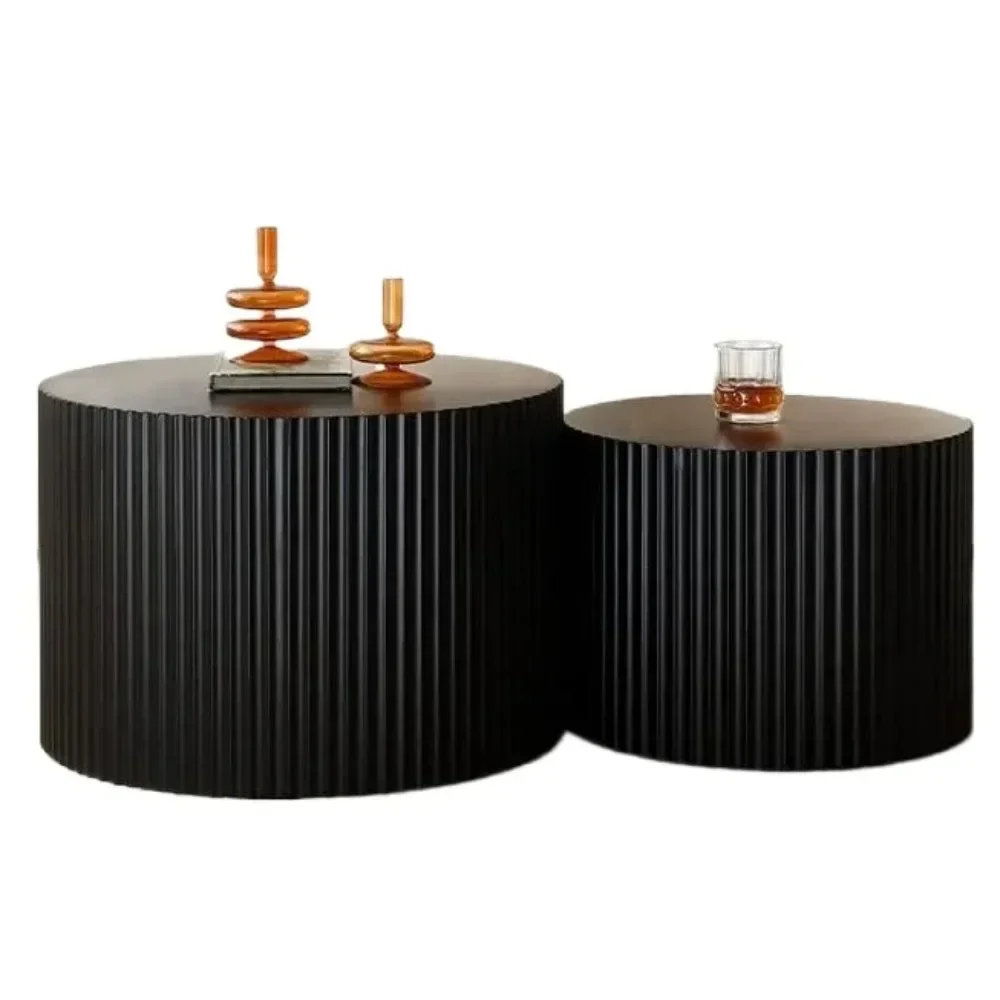
Space-Saving Features That Maximize Functionality
In small spaces, furniture that serves multiple purposes is invaluable. Modern compact coffee tables offer innovative features that maximize their utility without sacrificing style.
Storage Solutions
Hidden storage can dramatically reduce clutter in small living spaces:
– Lift-top designs reveal compartments for remotes, magazines, and everyday items
– Drawers provide organized storage for smaller items
– Open shelves offer display space while maintaining visual lightness
– Compartmentalized options help categorize different items
Exploring functional options with hidden storage can help you identify the storage configuration that best meets your specific needs.
Nesting and Expandable Tables
These versatile options provide flexibility for changing needs:
– Nesting tables can be separated to create additional surfaces when entertaining
– Pieces can be tucked away when not in use to free up floor space
– Different heights accommodate various activities (dining, working, casual use)
– Can be rearranged to create different configurations
Convertible Designs
Transforming coffee tables represent the ultimate in space-saving innovation:
– Height-adjustable models that convert from coffee table to dining table
– Expanding tops that slide or fold out to create larger surfaces
– Tables with built-in work surfaces that emerge when needed
Comparison of Functional Features
| Feature | Best For | Consider |
|---|---|---|
| Lift-top | Working from home, casual dining | Mechanism durability |
| Storage drawers | Organized storage of small items | Access clearance |
| Nesting tables | Entertaining flexibility | Stability when separated |
| Convertible height | Multipurpose rooms | Ease of adjustment |
| Ottoman tables | Child-friendly environments | Stability for table functions |
Ideas for styling multifunctional tables can help you maximize both the practical and aesthetic potential of these versatile pieces.
Mid-Century Modern End Table Sets of 2, Mid-Century Modern Square Side & End Tables, Mid-Century Modern White Side & End Tables
$348.24 Select options This product has multiple variants. The options may be chosen on the product pageMid-Century Modern Nesting Side & End Tables, Mid-Century Modern Nesting Table Sets, Mid-Century Modern Round Side & End Tables
Price range: $239.35 through $273.06 Select options This product has multiple variants. The options may be chosen on the product pageMid-Century Modern End Table Sets of 2, Mid-Century Modern Walnut Side & End Tables
Price range: $978.89 through $1,957.38 Select options This product has multiple variants. The options may be chosen on the product pageMid-Century Modern Coffee & End Table Sets, Mid-Century Modern Coffee Table Sets, Mid-Century Modern Oval Coffee Tables
Price range: $257.48 through $331.04 Select options This product has multiple variants. The options may be chosen on the product pageMid-Century Modern Glass Top Coffee Tables, Mid-Century Modern Glass Top Side & End Tables
$460.58 Select options This product has multiple variants. The options may be chosen on the product pageMid-Century Modern Glass Top Coffee Tables, Mid-Century Modern Vintage Coffee Tables, Mid-Century Modern Vintage Side & End Tables
$725.36 Select options This product has multiple variants. The options may be chosen on the product page
Material Choices That Create Visual Space
The materials you choose for your coffee table can significantly impact how spacious your room feels, regardless of the table’s actual size.
Transparent and Reflective Materials
Glass and acrylic create an illusion of more space by allowing the eye to travel through the piece:
Pros:
– Creates visual continuity with flooring
– Reflects light to brighten the room
– Makes the room feel larger and more open
– Shows off beautiful rugs or flooring underneath
Cons:
– Requires frequent cleaning to maintain transparency
– May show fingerprints and dust more readily
– Can raise safety concerns with very young children
Transparent options to create visual spaciousness are excellent for making small rooms feel more open while maintaining functionality.
Light vs. Heavy Visual Weight
The concept of visual weight affects how substantial a piece feels in your space:
Lighter Visual Weight:
– Furniture with exposed legs that allow you to see underneath
– Open framework or wireframe designs
– Pale wood tones and lighter finishes
– Thinner surfaces and frames
Heavier Visual Weight:
– Solid sides that reach to the floor
– Dark, dense materials like dark woods or concrete
– Chunky, substantial construction
– Wide borders and thick tops
Durability Considerations
Small spaces often experience higher traffic and more intensive use, making durability crucial:
– Tempered glass resists scratching and breaking
– Hardwoods like oak and walnut withstand daily use
– Metal frames provide stability with minimal visual bulk
– Quality veneers offer wood aesthetics with better stability in changing humidity
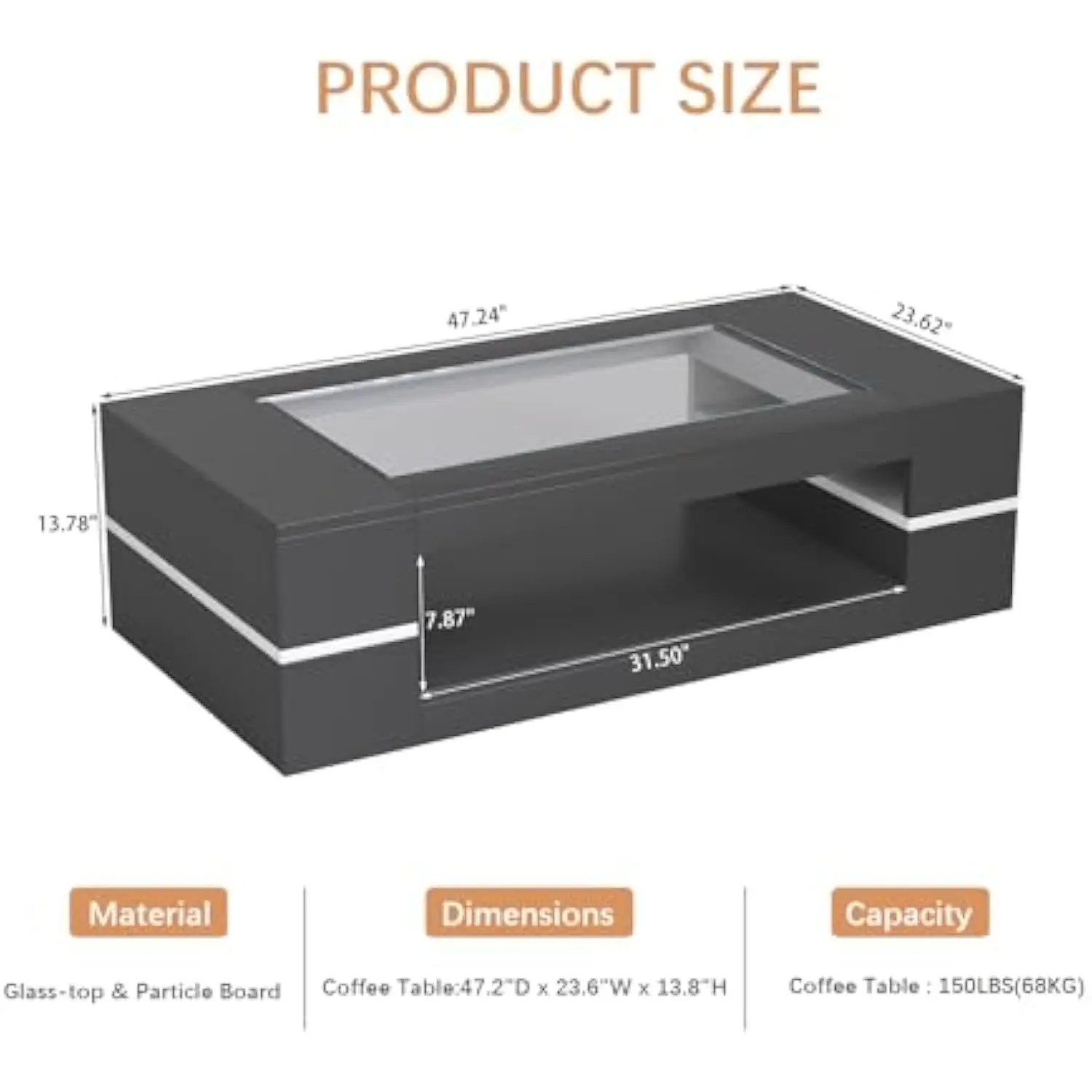
Style and Design: Complementing Your Small Space Aesthetic
Your coffee table should harmonize with your overall design vision while addressing the unique challenges of a small space.
Minimalist and Scandinavian
- Clean lines and simple forms reduce visual clutter
- Light wood tones create airiness
- Functional designs prioritize practical use
- Limited ornamentation keeps the visual field open
Mid-Century Modern
- Tapered legs create space underneath
- Organic shapes flow with movement patterns
- Warm wood tones add richness without heaviness
- Slim profiles maximize function while minimizing bulk
Understanding design principles for stylish compact tables can help you select pieces that are both beautiful and space-conscious.
Industrial
- Mixed materials add visual interest without bulk
- Metal frames provide strength with minimal thickness
- Wheels offer flexibility for rearrangement
- Weathered finishes hide wear and tear
Contemporary
- Innovative materials maximize durability while minimizing thickness
- Multifunctional elements adapt to different needs
- Bold colors can create focal points in neutral spaces
- Asymmetrical designs can work with challenging room layouts
For a cohesive look throughout your space, explore complementary design styles for cohesive spaces that work harmoniously with your coffee table choice.
Strategic Placement for Optimal Flow and Function
Where you position your coffee table is just as important as which table you choose, especially in compact living areas.
Centering Guidelines
- Allow 14-18 inches between the table and seating for comfortable leg room
- Ensure all seated positions can reach the table easily
- Position the table slightly closer to the sofa than to opposite seating
- For L-shaped sectionals, consider centering the table in the open space
Traffic Flow Considerations
- Identify main pathways through the room and keep them clear
- Allow at least 24 inches for walkways around the table
- Consider whether the table needs to be moved occasionally for activities
- Ensure the table doesn’t block access to storage, media components, or doorways
Alternative Placement Ideas
- Offset placement can work for asymmetrical room layouts
- For extremely small spaces, consider a side-oriented placement
- Quarter-circle tables can nestle into corners while remaining accessible
- Multiple smaller tables can be more flexible than one larger piece
Exploring examples of tables that work well in different arrangements can provide visual inspiration for your specific space challenges.
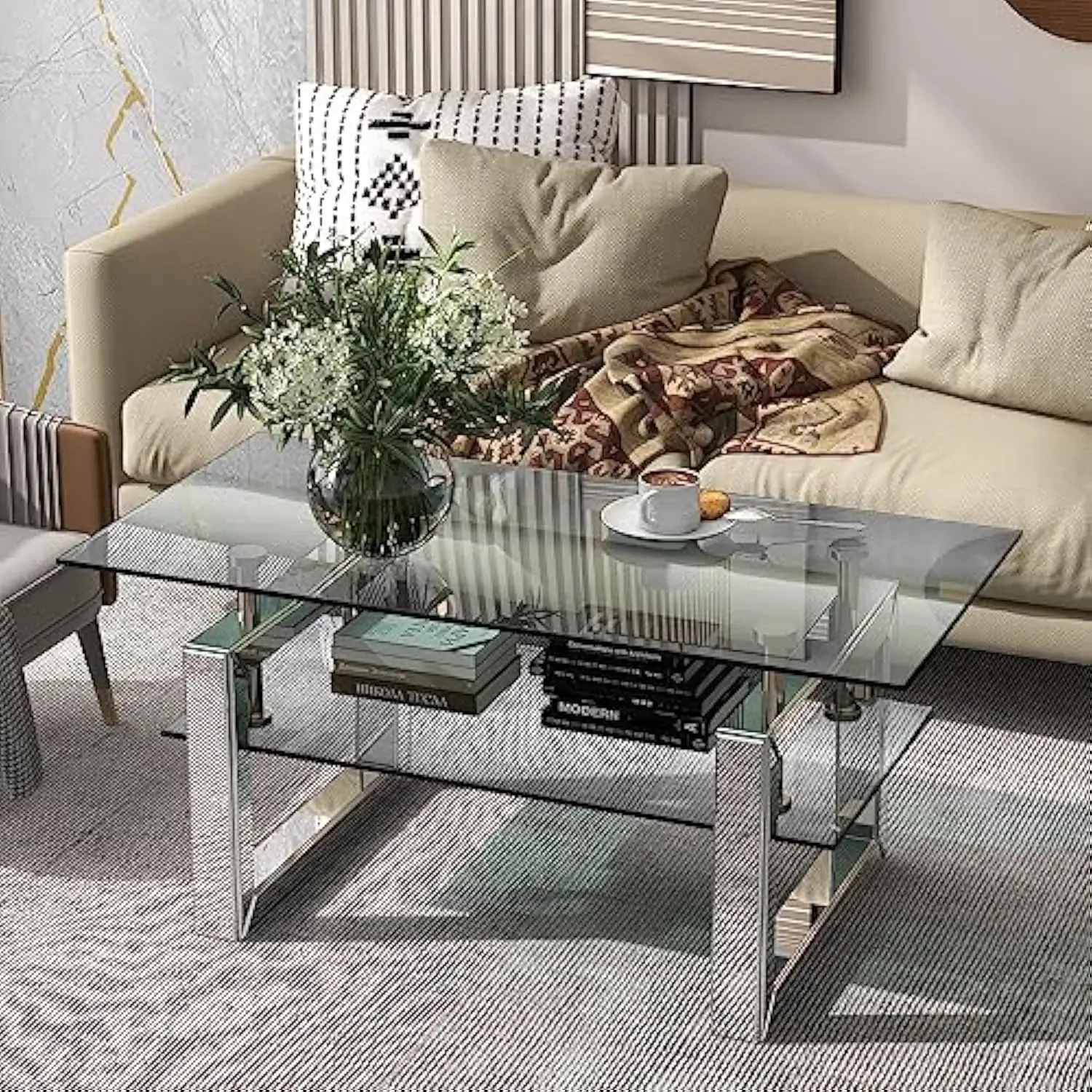
Budget Considerations: Finding Quality at Any Price Point
Quality compact coffee tables exist across a wide range of price points, but understanding where to invest can help you maximize value.
Price Range Expectations
| Price Range | What to Expect | Where to Invest |
|---|---|---|
| Entry-level ($100-250) | Basic functionality, simpler materials, fewer features | Structural stability, versatile design |
| Mid-range ($250-600) | Better materials, added features, stronger construction | Quality hardware, durable surfaces |
| High-end ($600+) | Premium materials, craftmanship, unique designs | Timeless style, multifunctionality |
Value Indicators Across Price Points
- Solid joinery (dovetail or mortise and tenon) indicates quality construction
- Smooth-operating hardware on drawers and lift mechanisms
- Uniform finish application without bubbling or inconsistencies
- Weight appropriate to materials (too light may indicate hollow construction)
New vs. Vintage Considerations
Vintage and second-hand options from vintage options that offer unique character can provide exceptional quality at lower price points:
– Mid-century pieces often feature solid wood construction
– Older items may have better craftsmanship than new budget options
– Unique character adds personality to your space
– Environmental benefits from reusing existing furniture
Consider future needs when budgeting—a slightly more expensive piece that adapts to different living situations may provide better long-term value than the least expensive option.
Common Mistakes to Avoid When Selecting a Compact Coffee Table
Even with careful planning, it’s easy to make these common missteps when choosing a coffee table for a small space:
Choosing a table that’s too large: Always measure your space and consider clearances before purchasing.
Selecting a table that’s visually heavy: In small spaces, bulky designs with solid sides can make the room feel crowded even if the dimensions fit.
Forgetting to consider all uses: A beautiful table that’s the wrong height for your activities will quickly become frustrating.
Neglecting material practicality: Glass looks spacious but requires frequent cleaning; wood adds warmth but may show water rings.
Prioritizing storage over accessibility: Packed storage compartments can make a table too heavy to move when needed.
Ignoring scale relative to other furniture: A delicate coffee table paired with substantial seating (or vice versa) creates visual imbalance.
Forgetting to measure doorways and stairwells: Ensure your new table can actually reach its destination.
Choosing trendy over timeless: In small spaces where every piece matters, selecting designs with staying power is especially important.
For a more detailed exploration of these considerations, our comprehensive buying guidance to avoid common pitfalls provides additional insights for making the perfect selection.
FAQs: Answering Your Specific Compact Coffee Table Questions
What’s the best coffee table shape for a very small living room?
Round or oval tables generally work best in very small spaces, as they eliminate sharp corners that interrupt flow and allow for easier movement around them.
How do I choose between a coffee table and ottoman for limited space?
Consider your primary needs—if surface stability for drinks and items is most important, choose a coffee table. If additional seating frequently takes priority, an ottoman with a tray might be the better option.
Can I use multiple small tables instead of one coffee table?
Yes! Matching sets for coordinated small spaces or a collection of complementary small tables can provide greater flexibility than a single larger piece, allowing you to reconfigure as needed.
What’s the minimum clearance needed around a coffee table?
Maintain at least 14-18 inches between the table and seating for comfortable leg room, and a minimum of 24 inches for walkways around the table.
How high should a coffee table be for a low modern sofa?
The table should be approximately 1-2 inches lower than your sofa seat height. For very low sofas (around 15-16 inches), look for coffee tables between 13-15 inches high.
Are glass coffee tables practical for families with children?
If you have young children, tempered or safety glass with rounded corners is essential. Consider tables with minimal glass components or look at alternatives like soft ottomans or wood tables with rounded edges.
What’s the best way to add storage in a compact coffee table?
Lift-top mechanisms provide the most accessible storage while maintaining a clean appearance. Look for options where the mechanism operates smoothly and stays open without being held.
How do I prevent a small coffee table from looking cluttered?
Follow the rule of three for decorative objects, group similar items on a small tray that can be easily moved, and establish a “one in, one out” policy for table items.
Styling Your Compact Coffee Table: Less is More
When it comes to decorating your compact coffee table, restraint is the key to an elegant, functional result.
Minimalist Styling Principles
- Limit decorative items to 3-5 objects total
- Vary heights and textures while maintaining a cohesive color palette
- Use trays to group smaller items and create visual organization
- Leave at least 30% of the surface clear for practical use
Functional Styling Ideas
- A small stack of favorite books or magazines (limit to 3-4)
- A single low plant or small floral arrangement
- One statement object paired with a practical item like a candle
- A decorative box that can store small items when guests arrive
By keeping styling simple, you’ll maintain both the visual spaciousness of your room and the functionality of your coffee table—proving that in small spaces, less truly is more.
When a Coffee Table Alternative Might Be Better
Sometimes traditional coffee tables aren’t the best solution for extremely compact spaces. Consider these alternatives:
Coffee Table Alternatives
| Option | Best When | Consider |
|---|---|---|
| Nesting side tables | You need flexibility | Can they function individually? |
| C-tables | You eat/work on the sofa often | Stability when loaded with items |
| Storage bench | You need extra seating | Height relative to seating |
| Floor poufs with trays | Child-friendly environment is priority | Stability of the tray surface |
Alternatives for extremely small spaces like coordinating side tables can sometimes provide better functionality than forcing a traditional coffee table into a tiny area.
Why Your Coffee Table Choice Affects Your Entire Living Space
Your coffee table does more than just hold your beverages—it anchors your entire living area visually and functionally. A well-chosen table establishes proper scale relationships between all your furniture pieces, creating a sense of intentional design rather than crowded chaos.
When properly selected, your compact coffee table becomes the bridge between separate seating elements, encouraging conversation and connection. It helps define the purpose of your space while enhancing its functionality for daily life.
At Hearth Forms, we understand that in small spaces, every piece must earn its place through both beauty and utility. By selecting a coffee table with appropriate dimensions, thoughtful features, and harmonious design, you transform your compact living area from merely functional to genuinely delightful.

